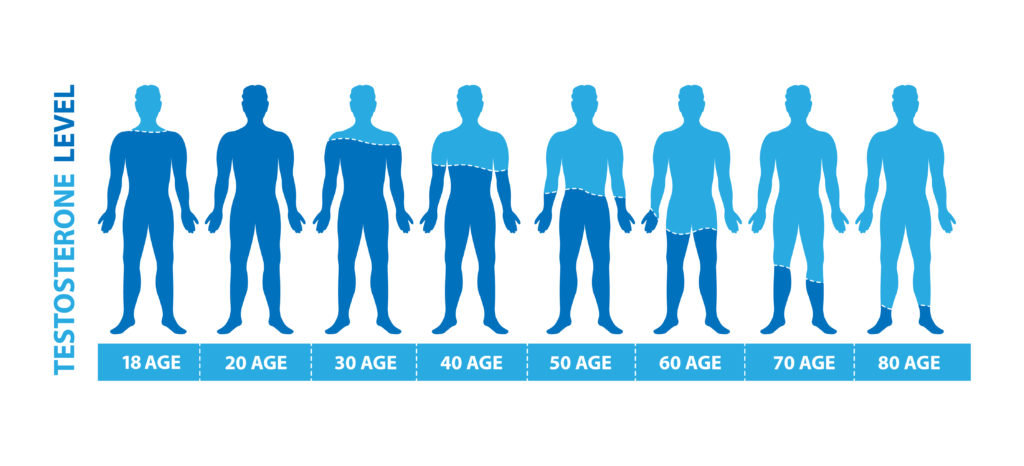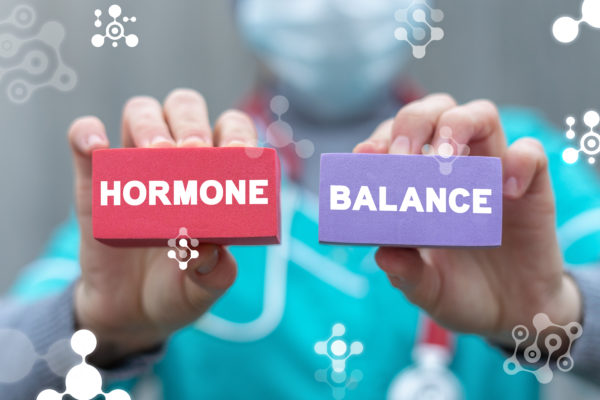Testosterone replacement therapy (TRT) is an important treatment for men who have low testosterone levels. For the majority of men, TRT is used to restore their testosterone levels to normal and improve their overall health. There are different ways that men can restore their testosterone levels, including through oral and injectable methods.
Testosterone replacement therapy dosage depends on many factors, including the age of the patient, his overall health and medical history, as well as the severity of his low testosterone levels. Men with certain medical conditions may need to take higher doses of testosterone replacement therapy than others.
Low testosterone levels can have a negative impact on your health, both mentally and physically. You may feel depressed, experience sexual dysfunction, or have other issues as a result of low testosterone levels. It is important to get treatment for low testosterone levels, as it can affect your quality of life. So, this article will provide you with information about testosterone replacement therapy dosage.
Typical TRT Dosages
Here we will be discussing TRT dosages through injection, which tends to be the most accurate. Men who are receiving testosterone replacement therapy usually take between 100 mg to 200mg of testosterone every week. Some men may need to take higher doses of testosterone replacement therapy, such as 300mg to 400mg of testosterone every week, but this is very, very rare and must be prescribed by a doctor. Normally, that is a steroid level dose.
It is important to remember that your doctor will adjust the dosage of testosterone replacement therapy over time as your testosterone levels begin to normalize. Long-term unsupervised and abused use of testosterone replacement therapy can cause many problems, including:
- Strokes
- Blood clots
- Heart attacks
- Diabetes
- Sleep apnea (inability to breathe during sleep)
If you have any of these problems, it is important to speak with your doctor before starting testosterone replacement therapy. Your doctor will be able to help you determine if TRT is right for you.
For the majority of men, testosterone replacement therapy is between 1 cc and 0.4 cc’s of testosterone 200mg/ml every week. For some men, higher doses of testosterone replacement therapy may be necessary. For these men, it is best to consult with a doctor or other medical professional. For most though, its 200mg or less per week. Many men find that 200 is actually a but too much and gives them supernatural levels of testosterone.
Typical Testosterone Levels by Dosage
Typically a dose f 180-200mg of testosterone per week can put you well over 1000ng/dL, which is above the high-end range of natural levels. This is why most men opt to take 120mg to 140mg per week to get more stable natural levels.
Injection Frequency
One thing that can influence your levels is the frequency at which you inject. Typically, guys like to inject less becomes it means fewer pins, so they would inject one time per week. However, as the week progresses, your levels drop, and it can create an imbalance between your other hormones like estrogen which get elevated to meet your new higher test levels. The best way to keep your levels stable is to inject more frequently, most men opt for every other day, or every 3.5 day injections.
Why Dosage Matters
Dosage matters because it influencers your current hormone levels, the severity of their condition, and the type of treatment they are receiving. While there is not a set amount that everyone should take, there are some general guidelines that can be used to help determine how much to take. For instance, most doctors will recommend a minimum dosage of 100 milligrams per week for men who have been diagnosed with low testosterone. For those who have been diagnosed with low testosterone due to prostate cancer, they may want to increase their dosage to 200 milligrams per week. Some men may also choose to start at 100 milligrams per week and increase it as they see how they respond.
Some common factors that will determine how much a person should take include:
Age
The older a person is, the more likely they are to require higher doses of testosterone replacement therapy (TRT). Some doctors may recommend taking higher doses if a man is over the age of 50.

The severity of their condition
TRT is used to treat a wide range of conditions, including hypogonadism, low testosterone levels, and low testosterone levels due to prostate cancer. A doctor will use the patient’s current symptoms and medical history to determine the best dosage for them.
The type of treatment they are receiving
TRT is most commonly used to treat low testosterone levels, but it can also be used to treat other conditions, such as low testosterone levels due to aging. Doctors will use the same dosages and determine the best method for treating a patient’s condition.
When it comes to dosage, it is important to keep in mind that men will respond differently to different treatments. As mentioned, for instance, some men may respond better to taking a high dose of testosterone, while others may respond better to taking a low dose.
High Dosages (Steroid Cycle)
For men who are using TRT to restore their testosterone levels, it is important to understand that the dosage they are taking may need to be increased. In many cases, this will require an increase in the dosage of testosterone and/or other steroid hormones. In these cases, it is also necessary to follow a cycle of steroid hormones, which can include Testosterone Enanthate, Testosterone Cypionate, and Testosterone Propionate.
The use of these steroids is known as a steroid cycle. The use of a steroid cycle will require an increased dosage of testosterone and/or other steroid hormones. The number of days that the individual will be using steroids can vary depending on the goals that they are trying to achieve. In some cases, this may require more than a month.
In addition, anabolic steroids and testosterone therapy are not the same thing. When using anabolic steroids, the goal is to achieve a higher level of muscle mass and strength. This is different from the goal of testosterone replacement therapy, which is to restore testosterone levels to normal.
This may be important for men who are interested in maintaining a healthy lifestyle. If the dosage of testosterone is too high, it may cause problems with a man’s heart, liver, and/or kidney.
Your normal hormone levels are not the same as they were before you started taking testosterone. For example, you may have higher levels of estrogen, which can be beneficial in some cases. Your normal hormone levels are also not your supernatural levels. Your hormone levels are the levels that you are currently experiencing, and they may change over time. Taking testosterone replacement therapy can help you achieve a higher level of testosterone, but it will not imbue you with supernatural strength and muscle mass.
Normally if you take anything above 200mg per week of testosterone, it can be considered a steroid cycle. If you’re trying to run a steroid cycle of testosterone, usually the dose ranges between 250mg to 500mg depending on how much of a result you want.
The Importance of Cycling (Steroid Doses)
If you’re going to run a steroid cycle of testosterone, you have to keep in mind that you can’t, or rather shouldn’t run it year-round. With steroids, it is important to cycle off if you don’t plan on doing therapy.
If you want to maximize your results, keep in mind a healthy lifestyle is important to follow during this process, as well as a post-cycle therapy that can help you recover your natural hormone production.
A cycle of anabolic steroids is designed to help men with low testosterone levels reach their peak performance. The goal of a cycle is to maintain supernatural testosterone levels while maximizing muscle mass and strength.
Risks of Taking High Doses
One of the most common risks associated with testosterone cycles is the possibility of developing high blood pressure. If you are taking testosterone and do not have a medical reason for doing so, you may find that your blood pressure is not able to remain stable. High blood pressure can be dangerous for men and can cause serious health problems.
A good starting point for determining the correct dosage of testosterone replacement therapy is to follow your doctor’s advice. Your doctor will be able to help you determine the best dosage for your individual needs. It is important to note that many men will take testosterone in cycles, and they will start at a low dose and gradually increase their dose as they feel more comfortable with their results. A doctor will work with you on this, and there are no hard-and-fast rules on how much to take.
Some men may find that they are not able to tolerate the effects of testosterone replacement therapy, and this is usually a sign that they are taking too much. The following are some common risks of testosterone therapy:
Acne
Men who have high testosterone levels may find that they have more acne than usual. Acne is a very common problem among men, and it can be treated through topical creams and medications.
Sleep apnea
Sleep apnea is a condition that causes a person to stop breathing during sleep. Sleep apnea can cause severe problems for men who have high testosterone levels, and they may find that they are not able to sleep properly. Sleep apnea can be treated through different medications and methods, and there are several ways that men can treat this condition.
Anxiety and stress disorders
A common side effect of taking high doses of testosterone is the development of anxiety or stress disorders. Men who take too much testosterone will find that they are not able to handle the effects of their own body producing more testosterone than usual. Anxiety disorders often go hand-in-hand with depression, so if you experience both conditions you may want to talk with your doctor about this possibility.
Limited sperm production
Men who take inappropriate doses of testosterone may find that they are not able to produce as many sperm as they used to. If you are experiencing this problem, you may want to discuss this with your doctor.
Benign prostatic hyperplasia
Testosterone replacement therapy can lead to problems with the prostate gland. The prostate is a gland that produces fluid that helps with the production of semen. If you have high testosterone levels, you may find that you have problems with the prostate gland. This can lead to problems with urination and other forms of problems such as cancer.
Gynecomastia
Gynecomastia is a condition that causes a man to develop breast tissue in his chest. This condition can cause embarrassment for men, and it can lead to low self-esteem. Gynecomastia can be treated with medications and topical creams, and it is a common side effect of testosterone replacement therapy.
Rare, but Possible
In most cases, TRT actually improves men’s health and there’s really not much too worry about. However, you want to make sure you. do it under medical supervision and not work with clinics that leave you to your own tools.
Wrapping up
TRT is a treatment that is used to treat men who have low testosterone levels. When men have low testosterone levels, they can experience a wide range of symptoms, including decreased libido, erectile dysfunction, and weight gain. However, if you are interested in restoring your testosterone levels, it is important to talk with your doctor about the proper dosage for your needs. High doses of testosterone can cause side effects such as acne and sleep apnea. Therefore, you should be aware of the proper dosage of testosterone replacement therapy to help restore your testosterone levels.
In addition, TRT is meant to replace your normal hormone levels, so you should only use it as a treatment if you have low testosterone levels. There are several other ways to treat low testosterone levels, such as through medical and surgical treatments. TRT is not meant to imbue your supernatural qualities. High supernatural levels are not healthy for the long term you should focus on getting treatment to help heal the symptoms that come along with naturally low testosterone levels.






